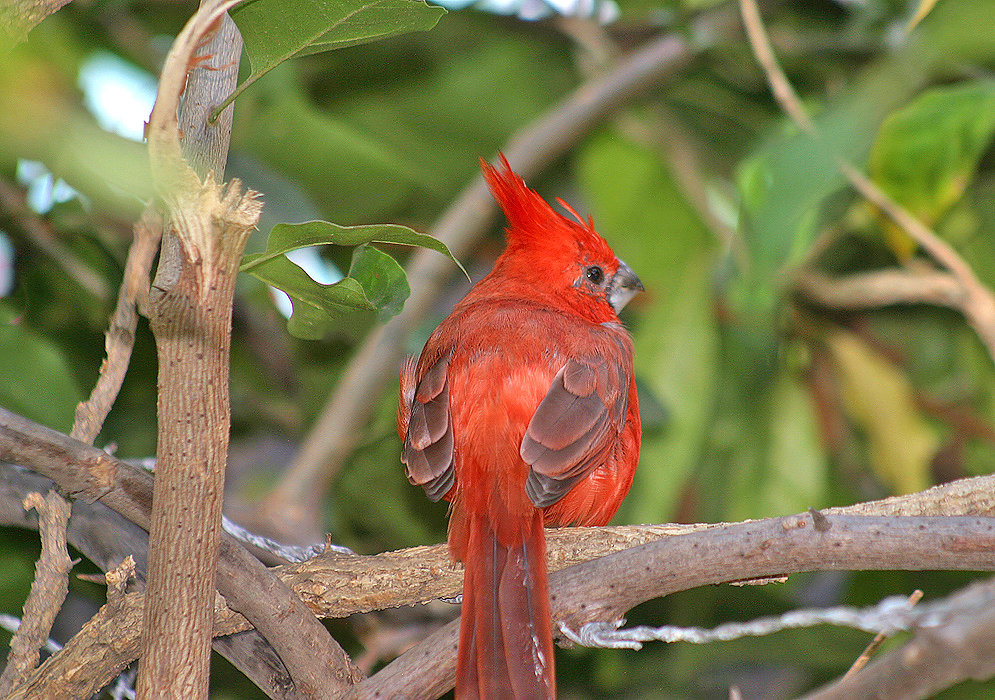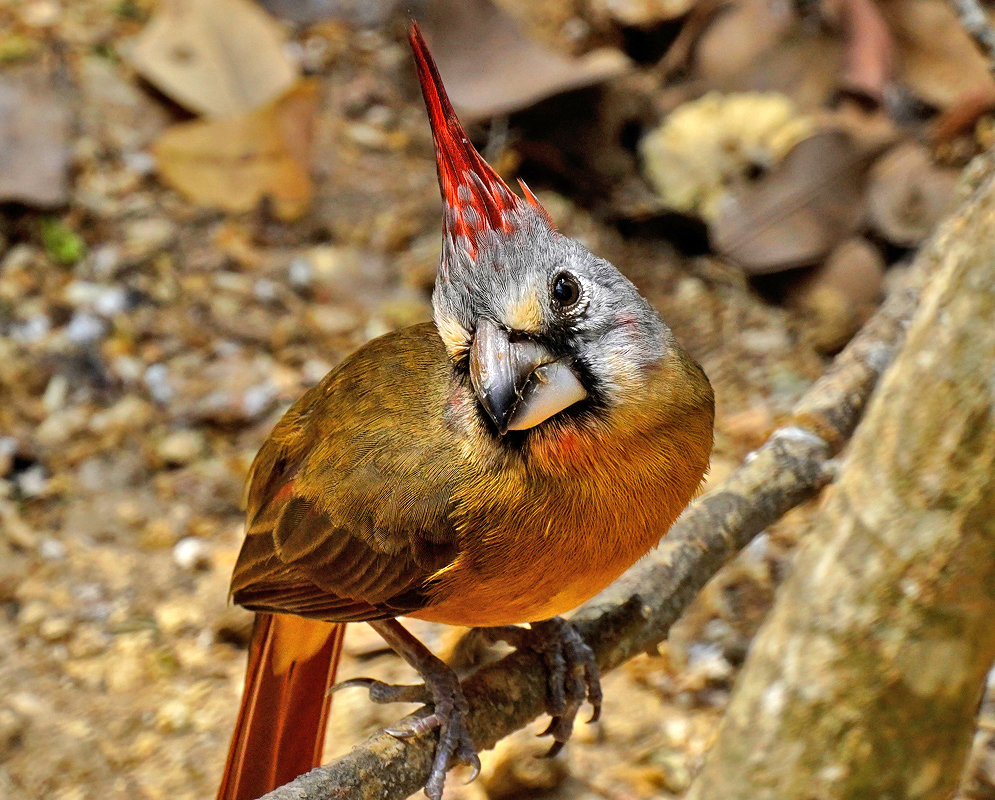This post has 11 Simple Fields-fields attached. Show fields.

The Vermilion Cardinal is a striking bird species belonging to the Cardinalidae family. Its distribution is primarily in Colombia and Venezuela, specifically in two distinct areas: from the Guajira Peninsula of northeastern Colombia into northern Venezuela, as far as Lara state, and further east in Venezuela, from Anzoátegui state to Sucre state, including Margarita Island. This bird prefers semi-arid scrublands, characterized by cacti and spiny legumes, typically found from sea level to about 700 meters. In terms of physical characteristics, the vermilion cardinal is about 7.5 inches long. Males are predominantly red, varying from bright to dusky shades, and feature a distinctive narrow black band around the lower part of their heavy gray bill. Females have a gray crown with elongated red feathers, brownish-gray head with white patches near the bill, and their upperparts are grayish-brown warming to brown on the rump, with buffy cinnamon underparts. The juvenile resembles the female but with more, and richer, brown.
Their diet comprises invertebrates, fleshy fruits, and seeds, and they forage either alone, in pairs, or in small groups through low vegetation. Nesting primarily occurs on Margarita Island, where nests are open cups placed in cacti or bushes, with the breeding season spanning from June to early August. The female exclusively incubates the eggs and broods the nestlings, but both sexes participate in feeding the young. The International Union for Conservation of Nature (IUCN) has assessed the vermilion cardinal as being of Least Concern, while it has a restricted range, the species appears to be common within much of it. Photographed in Guajira, Colombia.



